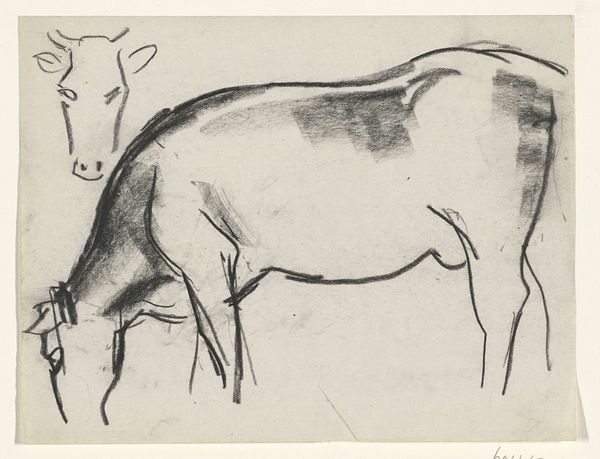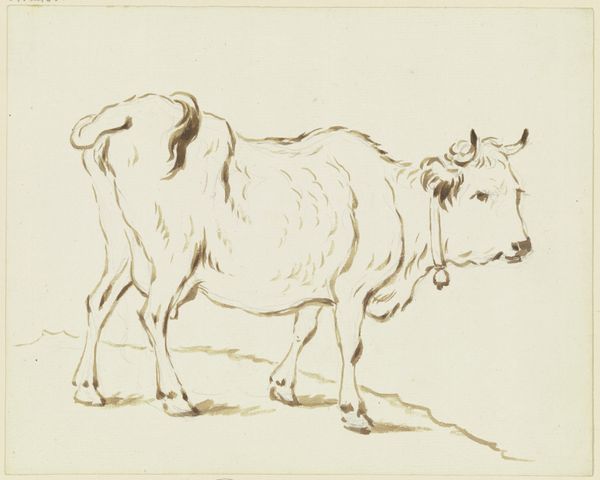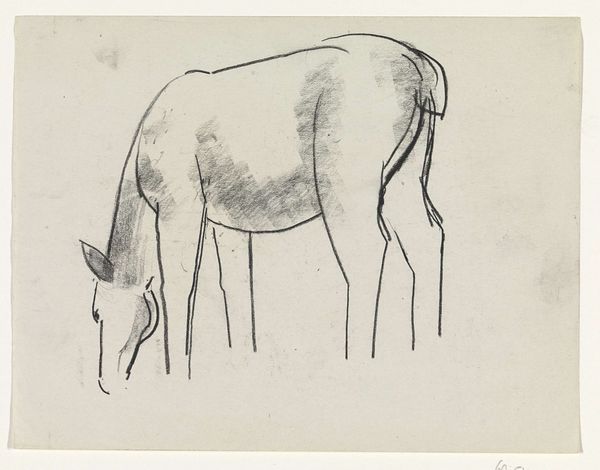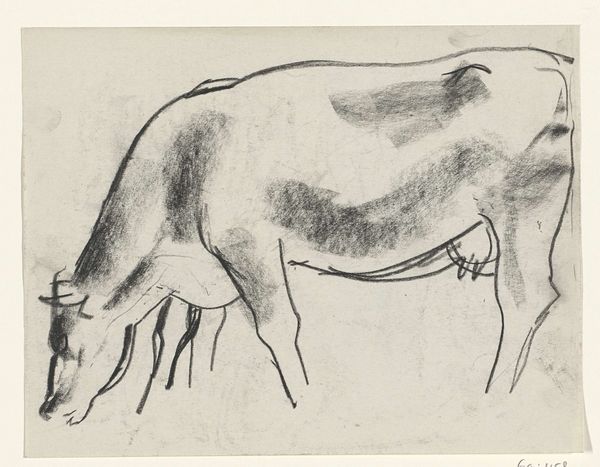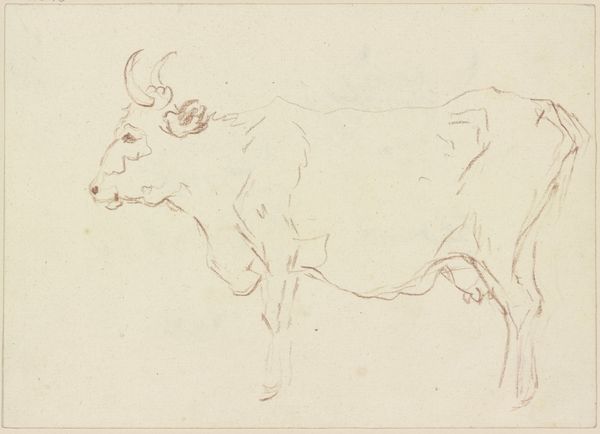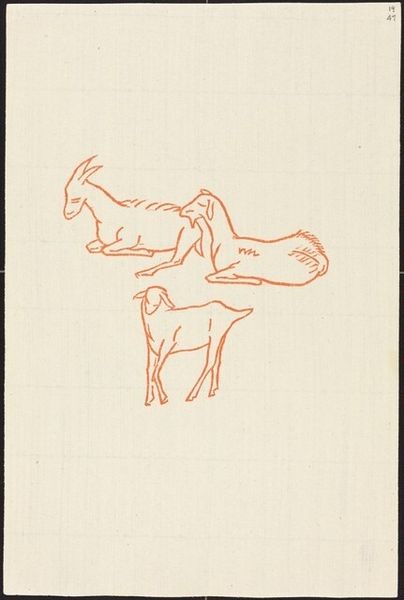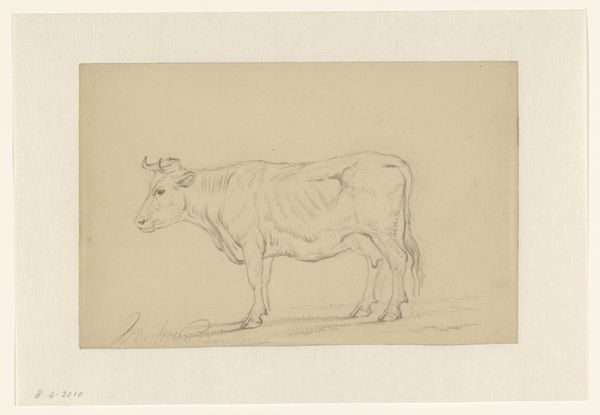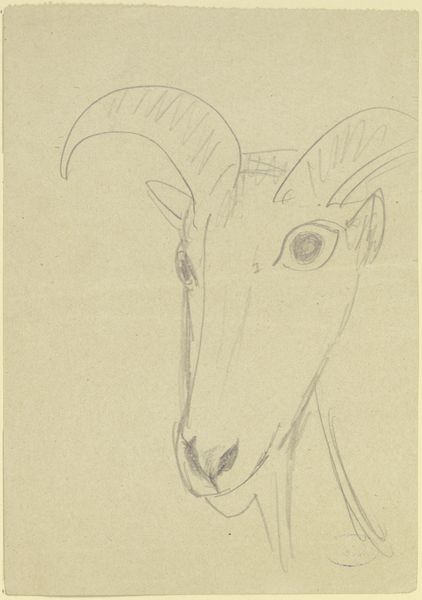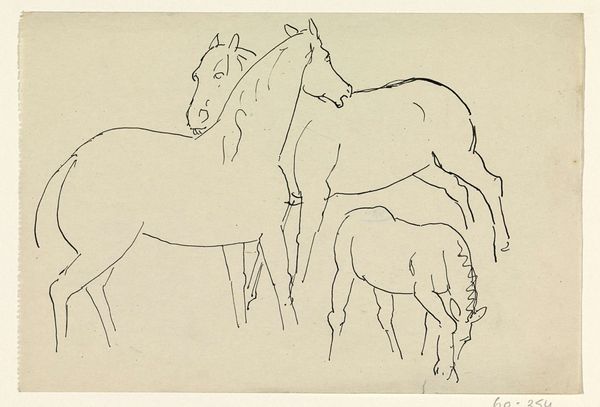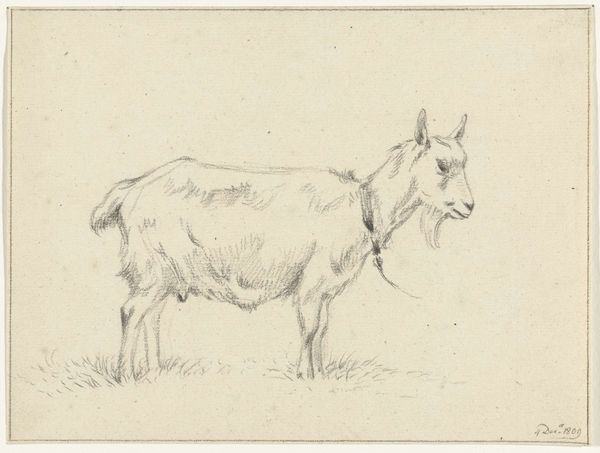
Dimensions: support: 254 x 387 mm
Copyright: CC-BY-NC-ND 4.0 DEED, Photo: Tate
Editor: This is Henri Gaudier-Brzeska’s "Eland," a quick sketch, and it feels so alive despite being just a few lines. What do you see in this piece, beyond the obvious depiction of an animal? Curator: I see a challenge to our anthropocentric view of the world. Gaudier-Brzeska, deeply influenced by his time, was grappling with how modernism could represent non-human life. It is interesting to consider the context of early 20th-century anxieties about industrialization and its impact on the natural world. Editor: So, you're saying it's not just about drawing an eland, but about our relationship with nature? Curator: Precisely. The sketch's rawness, its lack of adornment, speaks to a desire to capture the essence of the animal, perhaps as a commentary on the objectification of the natural world. Gaudier-Brzeska lost his life in WWI, right? It's a poignant reminder of the impact of conflict on both human and non-human lives. Editor: That gives me a lot to think about. It's more than just a drawing; it's a statement.
Comments
tatebritain 6 months ago
⋮
http://www.tate.org.uk/art/artworks/gaudier-brzeska-eland-n04527
Join the conversation
Join millions of artists and users on Artera today and experience the ultimate creative platform.
tatebritain 6 months ago
⋮
For Gaudier-Brzeska, animals provided as much fascination as people. He produced an extraordinary number of animal drawings, studying their movement and behaviour in much the same way as he approached his human subjects. As well as observing birds and deer in the park, Gaudier-Brzeska regularly visited London Zoo, sketching the animals so quickly that the ink was often still wet as he turned the page. These drawings manage to capture the anatomy and personality of each animal with only a few simple lines. Gallery label, September 2024
